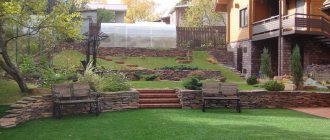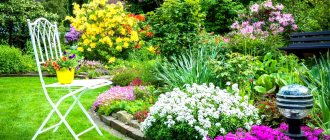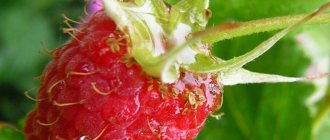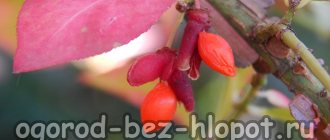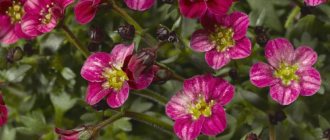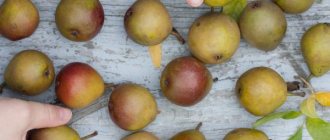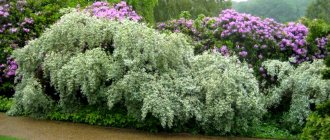In flower beds and garden plots, zinnia or, as gardeners call it, major, has long taken its place of honor. This flower was discovered by the Swedish naturalist Carl Linnaeus.
In the 18th century, European parks and squares began to be decorated with elegant, bright zinnia. And then they developed varieties and hybrids that could grow in different climatic conditions on all continents. Today, zinnia is actively used in landscape design. She is loved for her bright, varied palette.
Description and features of zinnia
A flowering shrub with branched erect or spreading elastic stems with a harsh edge blooms from mid-summer to late autumn. The heat-loving culture is afraid of frost and is unpretentious in care. Like many plants of the aster family, zinnia is not picky about the soil and loves good lighting. Depending on the variety, it grows from 20 cm to a meter. Majora's leaves are ovate with a pointed tip, dense, dark or rich green.
They grow oppositely or in whorls. The fruit is a triangular, flattened or oval achene.
It is used to decorate gardens and parks as an annual crop, although in the wild it is considered a perennial shrub. Grows in Mexico, North and South America. Breeders have bred abundantly flowering varieties of different colors and shades, the flower caps are flat or in the form of a hemisphere. The petals are reed-shaped, rarely grow straight, more often they curl into a tube, forming a terry bud, sometimes curling at the tip.
Flowering is multi-layered, lasts up to two months, and begins 50–55 days after emergence. In Russian conditions, agricultural technology of seedling cultivation is used.
The first row of outer large buds are flowers of the first stage, the seeds ripen in them, the rest are inside the bush, they bloom in the second and third stages, the seeds in them may not inherit the features of the species.
Where can dream grass grow?
In nature, this culture can be found in Siberia, the Caucasus or the Urals. In Altai there is even a specially created center for the speciation of lumbago. At the moment, experts are conducting research that will help them preserve sleep-grass.
In early spring you can observe flowering in the Leningrad region, the Baikal region and the Far East. The plant prefers pine, oak and birch forests. Can be used to create alpine slides and rockeries.
At the dacha, it is preferable to grow cultivated species. It is not always possible to do this from wild flower seeds. It is necessary to select the right material for sowing.
Types and varieties of zinnia
Existing garden classifications group numerous varieties of flowers according to their appearance into 4 species groups of zinnias: graceful, narrow-leaved, fine-flowered, linearis is separately distinguished, although in appearance it looks like thin-leaved myra.
Based on the length of the stem there are:
- tall zinnias, they are grown for cutting into bouquets, these are bushes from 60 to 90 cm in height. With good care and lighting, some varieties reach a meter in height;
- medium-sized, from 30 to 55 cm in height, they are bred for decorative areas;
- low-growing or flowerbed, dwarf, their height ranges from 15 to 30 cm, they look good in rock gardens, on alpine hills, they decorate balconies, and plant them in pots.
The color variety is worth considering in detail.
Graceful
An annual species of zinnia with dense petals forming large lush caps. It blooms from mid-summer until the onset of sub-zero temperatures. The group includes dwarf, medium-sized and tall varieties. The flower rosettes are dense, the diameter varies, the minimum is 3 cm, the maximum is up to 17 cm. A varied palette of flowers: from white to purple, numerous shades of yellow from lemon to cream, red from scarlet to dark burgundy, there are carmine, orange, lilac, lilac. Varieties:
- The dahlia group of large-flowered tall zinnias with dense hemispherical caps is the most numerous. The petals are reed-shaped with a round edge, collected in the form of tiles, the inflorescences are double, large, from 10 to 14 cm. Grown for bouquets, they retain their presentation for up to 3 weeks. Popular varieties: Californian giant, Denariz Giants, hybrid Russian size F1. New selections: Polar bear with snow-white inflorescences, Lavender of a surprisingly delicate blue-lilac hue. Crimson Monarch has carmine colored flower caps, Dream has lilac, rich, bright color, Hallo with coral pink inflorescences. Purple Prince or Giant Zinnia with caps the size of a saucer with a lilac tint, the petals are glossy and sparkle.
- Cactus-shaped or giant zinnia with pointed petals belongs to the tall species, the caps are loose, the petals are even at the base, forming a dense tube at the tip. The popular Giant Cactus Flowers series is created for bouquets, tall bushes, up to a meter high, flower caps in orange, scarlet, sunny, dark carmine colors.
- Chrysanthemum flowers are classified as medium-sized species. The petals are large, collected in terry buds. Petals of a single color form a tube or have the shape of a curl.
- Pompons are low-growing, branched zinnias, characterized by increased bushiness and hemispherical flowers. Cold-resistant, tolerate light frosts on the soil, bloom from June to late October. Popular varieties: Little Red Riding Hood, originally called Rotcopchen. medium-sized bushes with flower caps of a rich red color, the petals do not fade in the sun; Tom-Thumb, a dwarf variety that looks like Little Red Riding Hood, but the flower is not as dense.
- Fantasy - medium-sized bush zinnias with loose flower caps with a diameter of 8–10 cm. The petals are narrow with a forked, uneven tip; in many varieties they are curled, they can be monochromatic or variegated. The popular low-growing variety Shortstaff branches well, the flower caps are small, 3.5–4 cm in diameter, the colors are juicy: red, coral, sunny, white, cherry.
Narrow-leaved
This is a medium-sized group of zinnias, the height of the spherical bush is 45–55 cm. The flower caps are small, up to 3.5 in diameter, flat or loose, like terry ones. The petals are medium dense, rolled into a tube. have a uniform yellow or orange color, the rows of small petals near the core are darker than the rest. Externally, narrow-leaved zinnia resembles marigolds.
Popular varieties often used in landscape design:
- A Persian carpet, on a dense bush there are simultaneously buds of different shades from sunny yellow to saffron.
- CandiStripe, a zoned version of the Persian carpet, is distinguished by striped flower petals; the second name of the variety is Tiger.
- Glorienshain, a variety with a neat bush strewn with terry caps of bright orange color, sometimes a dark brown narrow border is noticeable on the petals.
- Cherry is a dwarf hybrid with branched shoots, used for year-round home cultivation in pots, the buds are hemispherical, double, the color of the petals is transitional, orange at the base, saffron at the tip.
- Persian Carpet is shaped like a Persian carpet, the color of the petals is white or lemon, the bushes are dense and massive.
Hybrids
Breeders have obtained many ornamental species by crossing narrow-leaved and graceful zinnia, the most popular varieties used in landscape design:
- “ProfusionMixed”, a whole series of color and height varieties has been released under this brand. The bushes branch well and are strewn with multi-layered flowers. The petals of hybrid zinnias are similar to chamomile.
- The “Carousel” color mixture is a medium-sized, large-flowered variety of zinnia, the caps are dense, the petals are narrowed towards the tip, vary in color, small, growing at the core of a different shade.
- The Swizzle variety series is represented in Russia by two varieties of Cherry Ivory with white-cream dense buds, the petals change shade towards the tip; Scarlet Yellow with rich red caps, petals surrounded by a small brown border.
- Shaggy Dog is a tall bush with loose buds, narrow petals twisted into a tube.
- "Magellan" is a low-growing variety with dense buds up to 10 cm in diameter. Color varieties of the hybrid: coral, salmon, orange, juicy cherry, bright red, rich and pale yellow.
- Peppermint Stick is a medium-sized hybrid with a smooth transitional color of the petals from sunny to red.
- Envy is a branched bush with hemispherical flower buds of different shades, used for landscape design of city parks.
Fine-flowered
Outwardly it resembles a cosmos. The bush is loose, medium-sized, the stem is thin, slightly reddish, divided into small knees. The diameter of the flowers is small, up to 3 cm. The petals are sparsely planted, narrow, arching, purple in color.
Linearis
A low-growing variety of zinnia, the shape of a small bush, reaching 30 cm, is spherical. This species is sometimes called angustifolia, but it is more branched. The petals are dense, narrow, sharp, yellowish. Several selection varieties:
- Golden Eye is a snow-white flower rosette like a chamomile, with a dense row of small petals at the core.
- Caramel compact bush is strewn with small flowers with dark wide centers, the petals are dense, matte, pale yellow.
- Yellow Star – deep yellow flowers.
Linearis is grown in apartments as a perennial potted crop; zinnias are unpretentious in care and are valued for their abundant long-term flowering.
Planting zinnias
The plant is heat-loving and does not tolerate frost well; only some selected varieties can withstand sub-zero temperatures.
Zinnias are grown from seedlings. It is kept at home or in a greenhouse until the end of return frosts. Sowing of seeds is carried out in March or April; it is convenient to sow zinnia in individual cups or peat tablets. The soil is purchased ready-made, universal or for tomatoes. The soil is made independently by mixing turf soil, river sand and humus in equal proportions.
Before planting, the seeds are checked for germination; sprouts appear within five days. Planting dates are selected according to the lunar calendar. The most convenient way to use peat tablets is to soak them without removing the reinforcing mesh. For planting zinnias, choose tablets with a diameter of 4 cm. In second place for convenience are individual cups; you can purchase cylindrical blister cups of 6–8 pieces. Deepen the seeds to a depth of 0.5–1 cm. When planting in groups, maintain an interval of at least 4 cm between plants. To ensure rapid emergence of zinnia seedlings, tropical conditions are created: the planting containers are well watered, covered with film, put in a warm place, the recommended germination temperature is +25...+27 °C.
Shoots appear in 5–7 days. The film is removed and the seedlings are transferred to a warm, illuminated place.
Features of growing zinnias
During the period of active growth of seedlings, fertilize with Agricola complex fertilizer for indoor plants. When general planting of seeds in a large container, plant picking is carried out after the appearance of the third full-fledged leaf.
The optimal growth temperature is not higher than +22…+24 °C, not lower than +17 °C. If the seedlings are very stretchy, they are given additional light, increasing the daylight hours to 14 hours. The plant blooms 2.5 months after the sprouts appear; seedlings are transplanted at the age of 4 to 6 weeks. During the growth process, lateral shoots are pinched and the top of the stem is removed. You can cut it with scissors; they are pre-disinfected.
Fertilizing during the growing season is carried out no more than once a month. It is advisable to choose complex ones, which include potassium, calcium, and phosphorus. Nitrogen fertilizers are applied in a limited manner so as not to provoke root rot. For feeding, superphosphate, ammophosphate, potassium sulfate, and ready-made fertilizers “Flower” and “Rainbow” are used. Before planting in the ground, the seedlings are hardened off - taken out to a cool place, allowed to spend the night in the open air, first under a fabric cover, then without it.
Caring for zinnia in open ground
The complex of agrotechnical measures includes weeding of seedlings, watering during the dry period, fertilizing during budding, removing shoots after flowering, new ones will form in their place. If the soil is dense, it is advisable to loosen it.
Only bush ornamental varieties are pinched. The stems for bouquet zinnias are left single, even, so that the flower has a marketable appearance.
Zinnia does not require care. It grows better in a well-lit place, but will also delight in shady areas.
Pests
Majors are afraid of caterpillars, scale insects and spider mites. But their main problem is powdery mildew and other bacterial diseases. They occur in the absence of ventilation caused by too dense planting or excessive watering. Therefore, the soil for them should be loose, well permeable to water. The moisture that remains on the buds and leaves after watering from above also contributes to the development of these diseases. If plants are planted densely in one place, then do not be afraid to remove a few weak shoots so that the rest develop normally. Also, don't overdo it with watering. Inspect plants and remove parts affected by pests.
Modern varieties of zinnia have been cultivated to increase resistance to powdery mildew, so if you follow planting and care recommendations, it is unlikely to bother you.
How and when to collect zinnia seeds
The cut seed heads are further dried until they crumble. After this, they are kneaded in the palms so that the seeds appear. They are sorted before packaging. Zinnia has a distinctive feature: different bushes can grow from one basket. This is due to the stage of seed development.
Only the elongated spear-shaped seeds with a pointed tip and the narrow ones with a grayish tip are left for planting. The brown, heart-shaped ones are thrown away; low ornamental base plants grow from them, even if the seeds are collected from terry bushes.
Experienced gardeners divide the seeds into groups. They choose spear-shaped ones for growing loose double and flat buds; elongated ones with a grayish tail usually completely inherit decorative characteristics.
The seeds are placed in bags and labeled with the year of collection, color, and variety. Store seed material at room temperature in paper. With high humidity, germination rate decreases.
Disease resistance
Don't forget about loosening the soil. This is important, especially after rain and watering the soil. This way you will ensure free access of oxygen to the root system of the flowers. This will allow the plant to develop fully and be more resistant to the formation of fungal infections.
By external signs, the sickness of plants can be determined by the white-grayish coating that appears on the leaves.
Zinnias are also prone to powdery mildew, root rot, and fusarium. Major pests also do not neglect them: snails, spider mites, aphids, slugs, chafers.
Mr. Summer Resident Recommends: The Benefits of Zinnia in the Garden
The plant is cultivated for decorative purposes; it occupies a key place in landscape design. It is appreciated by site owners. Benefits of zinnia:
- A bright palette of shape colors and shades from yellow to purple. The exception is blue; only the lavender variety has been bred.
- The buds do not fade under the sun and stand well in a bouquet.
- Not demanding of care in open ground, drought-resistant, unpretentious to the composition and acidity of the soil.
- Flowers attract pollinating insects: bees, butterflies. The seeds are eaten by birds.
- Duration and multi-layered flowering.
- Species diversity, grow in different heights.
- Zinnias do not oppress garden crops and greenery; it is not difficult to choose a place for planting.
When choosing a place for zinnia, you should consider the advice of designers:
- It is better to plant them in groups; for single planting, large-flowered varieties are preferable.
- Low growing plants make excellent border designs.
- Zinnia goes best with asters, marigolds, and saffrons.
At the end of the season, the bushes can be transplanted into pots; they will delight you with flowers all year round.
Your own florist
You can safely make home bouquets with zinnias. Removing flowering stems only provokes the development of new flower ovaries, but for this to happen, the cut must be located above a leaf or a new bud.
In addition, majors look beautiful in pots that can be placed anywhere on the site or even on the balcony in an apartment building. It can be a monoculture composition or a mixture of several types of flowers.

